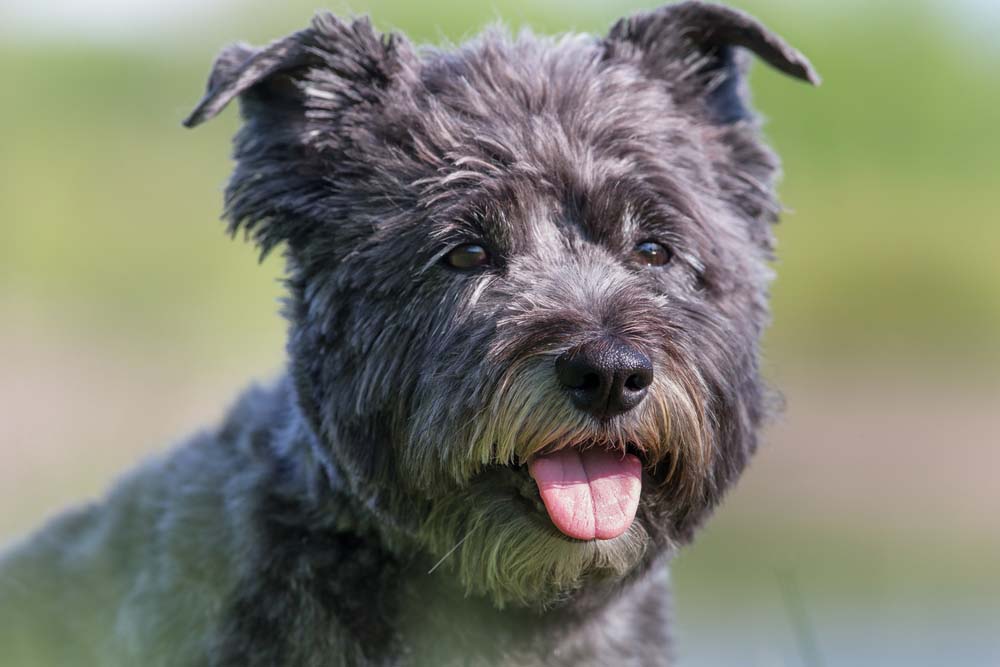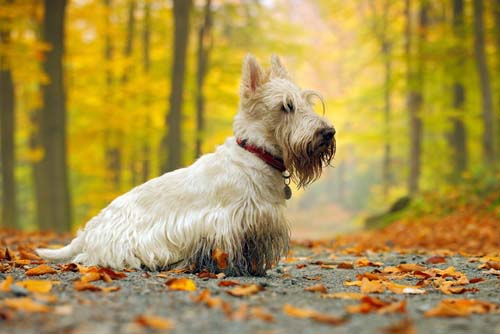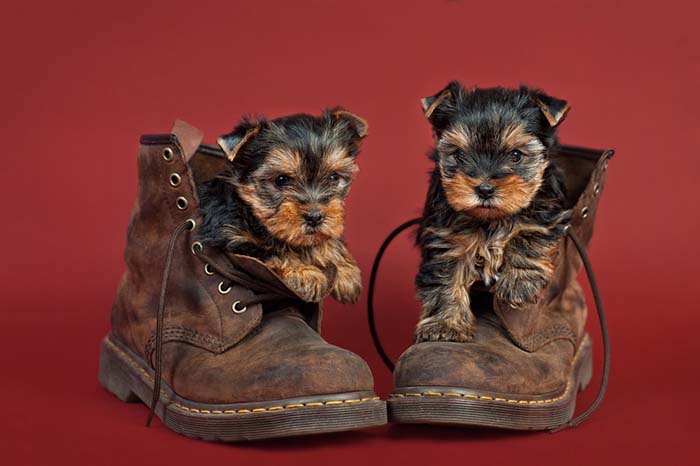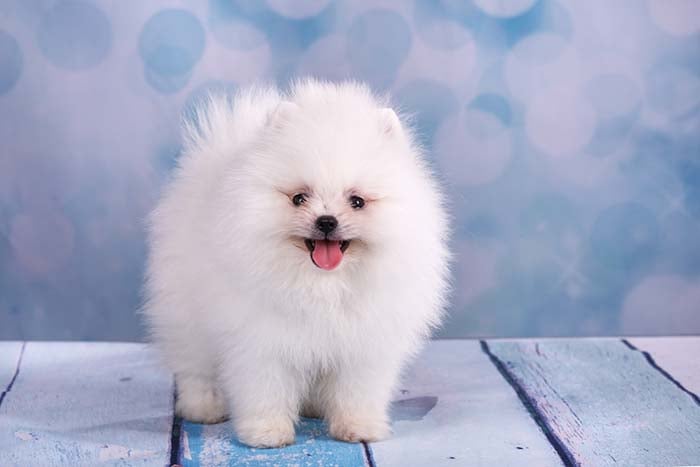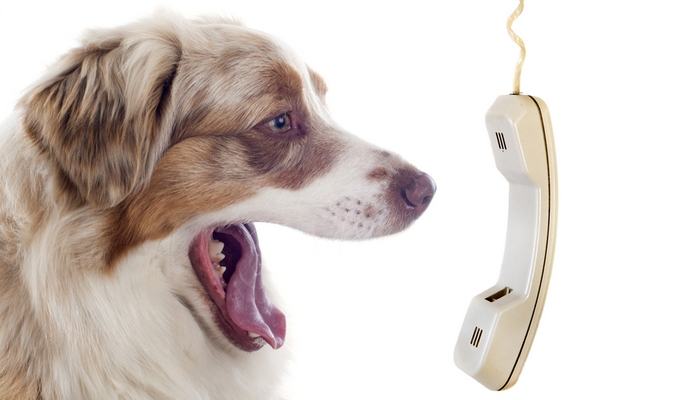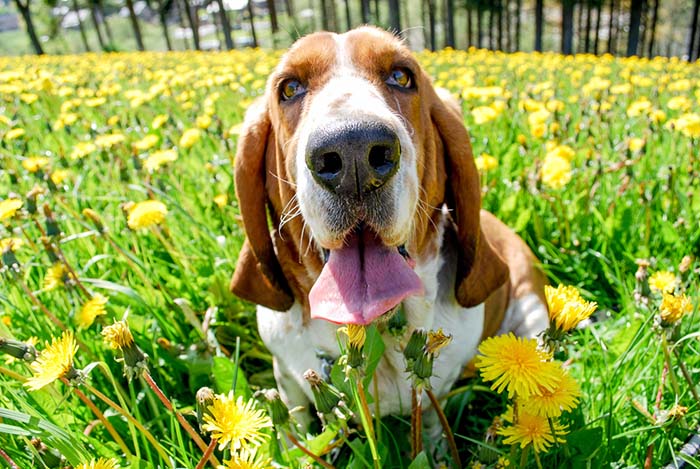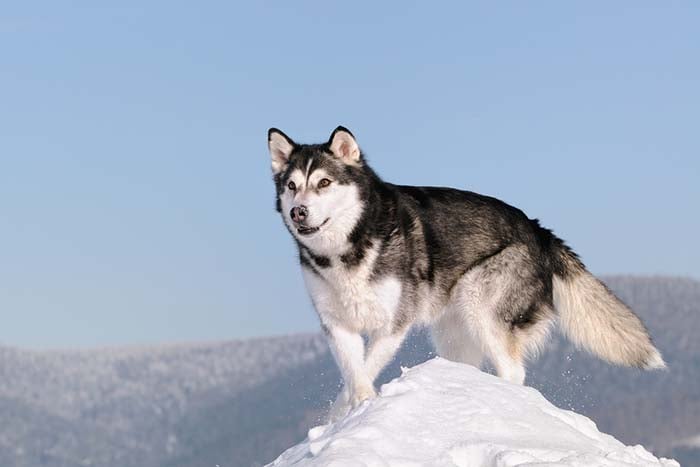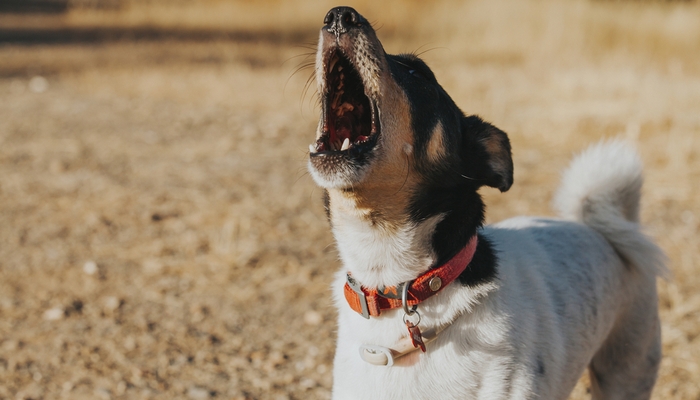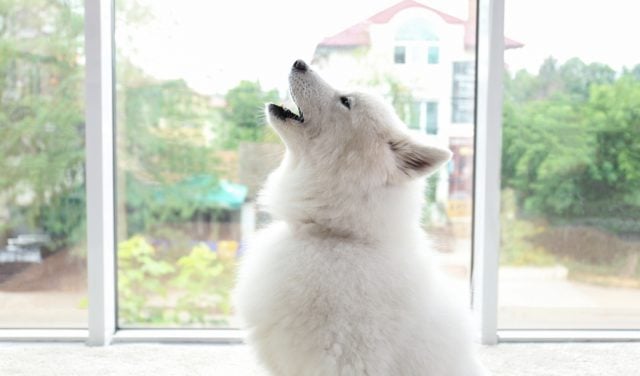
Table of Contents
Just because a dog breed is known to be vocal doesn’t make them any less popular. If you need a vocal canine or are trying to stay away from one, then this list is for you. Below are the most talkative dog breeds that are known to bark a lot.
Talking and loud dogs are likely to be less suitable for living in apartment buildings, housing developments, or inner cities. If you live in a town or city that has noise restrictions, which include barking dogs, you may need to consider quieter breeds instead.
The Science of Barking in Dogs
It used to be claimed that barking in dogs has no functional value and is simply a byproduct of domestication. However, recent studies have disputed these claims and proven that barking is actually a way for dogs to communicate (1, 2). Most commonly, a bark is used as a way of warning, greeting or playtime related (3).
Researchers have also observed that barks differ among different breeds, and occasionally even among individual dogs, and the bark's frequency will often be anywhere between 160 Hz and 2630 Hz (4, 5). All dogs can distinguish between these different barking frequencies and react accordingly to what the other dog is communicating (6).
Scientists discovered how different breeds have different barking patterns, and use barking in their own ways, including how often they bark and how likely a dog breed is going to use barking as a way of communication as opposed to other methods (7). For example, breeds like Basenji, Shar-pei or Chow-Chow are much less likely to bark and will often either refuse communicating, or use other ways to demonstrate their emotions.
Most Talkative Dog Breeds Under 25 Pounds
1. Chihuahua
These sassy dogs (pictured above) have a reputation for being yappers. That is not true as they don’t bark any more than many other breeds. However they are protective and have a shrill yap when they feel that they, or their owners, are threatened.
Proper socialization starting from puppyhood will help to curb nuisance barking. Like most breeds, they need owners that keep them busy and provide plenty of attention to keep them from having unwanted behaviors.
2. Cairn Terrier
A traditional vermin catching breed, these pups will bark at squirrels, cats, birds, and anything else that moves. They also have a lot of energy and will become loud and destructive when they are bored.
These fur-babies do best in homes with active adults or children. Just make sure you have a sturdy fence and leash as these dogs love to put on a chase. They are independent and harder for the inexperienced to train.
3. Miniature Schnauzer
Created to help on the farm, these little dogs are brave and rugged. They were used to kill rats and chase of all vermin. These little pups love to bark. Although they have a history of being tenacious, they are still loving and affectionate.
Not aggressive, these most talkative dog breeds do well with children that can wear them out and prevent excessive barking. Although, they still love to yap during playtime.
4. Scottish Terrier
Like many terriers, the “Scottie” makes a great watch dog. If you are looking for a small dog without the shrill bark, then this is the breed for you. Instead of high-pitched yaps, he has a healthy, powerful bark.
Created to hunt rodents, he still fulfills that purpose today. These pooches also love to dig, so be prepared. Like his cartoon counterpart, he is brave and confident.
5. West Highland White Terrier
Originally known as the Roseneath Terrier, this is another small dog with a big personality. Originally used to hunt rodents and small game, like other terriers, the “Westie” does better with a fence and secure leash.
To many, their stuffed animal appearance is worth the effort needed to tame these most talkative dog breeds. To be truly happy, he needs a yard or walks so he can exercise his curiosity and his vocal chords.
6. Yorkshire Terrier
The “Yorkie” is known to bark excessively, in fact, it does fit the stereotype of the little, yappy ankle-biter. This doesn’t mean it can’t be trained to curb these desires. Adventurous and curious, these dogs always need to be supervised when indoors or out.
Their small size makes them susceptible to injury and attacks by other animals. However, this need also gives more opportunity to train the Yorkshire Terrier against nuisance barking.
7. Beagle
This dog has more to say than just the typical dog barking. These scent hounds will give long, baying howls when they are on the scent. They will also pick up the howl from other dogs in the neighborhood, trains, or other noises.
One fun fact about the Beagle is that if you begin to howl, so will they. They have a third sound, the short bay (a type of yip) that they use when hot on the trail of its prey.
8. Dachshund
Also known as a “Dachsie”, their name literally means badger dog. These little dogs were bred in Germany to hunt…you guessed it…badgers. Although these little dogs are popular because of their unique look, they do not have the family dog temperament.
These most talkative dog breeds are still hunting dogs at heart and love barking, digging, and chasing. They are independent, but with a patient, experienced trainer, they can curb these desires.
9. Rat Terrier
These muscular canines are fearless. They can live up to 20 years, so if you aren’t ready for that kind of commitment, it is best to pass up this energetic dog. These pups are not only energetic, but they are loud.
With a shrill bark, they always like to make their presence known to keep the unwanteds out of their territory. These little dogs adapt well to apartment living, but they will need socialization and training to curb their nuisance barking.
10. Pomeranian
These fluffy dogs have an alert, lively expression. They can grow very attached to their owners which make them very vocal. When strangers and often children approach, they have a low growl that means, “Leave me alone”.
When they hear any noise that is threatening, they bark with a high-pitched shrill. Unknown to many, this breed is in the “Spitz” family with Huskies, Malamutes and Akita. They come in a variety of colors.
11. Miniature Pinscher
Counter to popular belief, the “Min Pin” is not a miniature Doberman, although among other coloring, it can have the coloring of a Doberman. It is a brave dog and will give chase with his loud barks and non-stop energy.
A known escape artist, they should never be off leash outside, even in a fenced area. Not only will this pooch need socialization and training to curb nuisance barking, but it will need obedience training from an experienced trainer.
Most Talkative Dog Breeds Between 25-60 Pounds
12. Australian Shepherd
Pictured above, the “Aussie” makes a great dog for an outdoor family. They love the water, playing, and learning. These canines do love to bark, but they also talk in other ways. With woo-woos and whining, they will make their desires known.
I know from experience that owners usually learn to interpret these sounds, which only make the dogs seem to do them louder. When bored, these pups will become even more vocal and destructive.
13. American Fox Hound
Like most hound dogs, this breed also has a collection of barks, yips, bays, and howls. Not recommended for city life, this canine needs space to do live the doggy life – being vocal, digging, chasing, and playing.
That does not mean that they can’t be trained to curb nuisance behaviors, but they are independent and stubborn needing an experienced, dedicated trainer. These most talkative dog breeds are not recommended for first time owners.
14. Basset Hound
These scent hounds can’t be stopped on the trail, but other than that, they are calm and slow moving. Their droopy appearance is the perfect avatar for that personality. They are very social and need people.
If left along too much, they will make their loneliness known with howling. Their bark is loud and low, travelling long distances. While they adapt well to apartment living they will need bark control training to keep the neighbors happy.
15. American English Coonhound
Also known as the Redtick Coonhound, this is a popular breed in the Southern United States. Sturdy and healthy, they are great for all kinds of weather, and they love being outside.
Along with this love comes this dog breed's love of barking. They are super friendly and do not bark for protection, but out of sheer happiness. Very sensitive, they need consistent, but delicate, training to curb any nuisance barking. Harsh training makes them sad and fearful.
Most Talkative Dog Breeds Weighing 60+ Pounds
16. German Shepherd
Typically thought of as an aggressive breed, I prefer to say they are reserved. The German Shepherd needs space and “me time” and get aggravated if kids, other dogs, and even adults are in their face.
They will bark to keep other things from invading their space and growl to warn others they are ready to stop playing. They also love to bark when excited and energized. These canines also participate in boredom barking – low, short barks that are spaced far apart.
17. Alaskan Malamute
This is a breed that you will see on entertainment shows, YouTube channels, and fluff pieces. Canines in this breed are puppies for life. They will only be truly happy in a place where they can play, frolic, and “talk”.
While they don’t bark, their talk includes low rumbling (not growling), yips, bays, howls, sighs, and snorts. You can never train them to be totally silent, and they won’t be happy if you try.
18. Rottweiler
The “Rottie” is happiest when given a job to perform. They are active and intelligent and need to be kept busy to avoid aggression and boredom behaviors like barking. These giant dogs are territorial and are not afraid to warn others off with growling and barking.
In fact, they need pack leader and socialization training starting as early as possible. They can be taught to remain silent as they are when performing their jobs as guide and police dogs.
19. Bloodhound
These scent hounds are easy going and mellow making great family pets, and search and rescue animals. They are tenacious on the trail, never giving up, and alerting others with howls, bays, and barks.
These most talkative dog breeds are intelligent and can be trained to out of nuisance barking, but they are still all dog. They need daily time to do the doggy activities of barking, howling, and roaming around. They don’t just use their mouths for talking and need chew toys.
20. Siberian Husky
Like other “Spitz” dogs, the “Husky” has a lot to say. They will fill their owner’s lives with the lively conversation of yips, whines, woo woos, howls, barks, and more. These fur-babies want nothing more than to communicate with others.
Energetic and great with children, they do well in an active, outdoors family. Just make sure they are kept inside in hot weather. Their double coat is made to keep them warm in artic temperatures.
MORE: 6 Dog Barking Tips To Quiet Down Your Dog
4 Other Reasons That Dogs Bark
We know already that dogs bark as a way of communicating something. Once you figure out what that “something” is – the reason for a dog's barking – you can find a way to put an end to it. No dog is going to be silent all the time, but barking can be reduced.
Boredom
When dogs are bored, they will find ways to entertain themselves. This can be by chewing up your favorite shoes, marking their territory (peeing), or sitting at a window idly barking. By making sure your pet has daily exercise, chew toys, and new activities, you can cut down on this form of noise.
Fear
Dogs get scared, too. They will bark and growl to try to scare off whatever it is that is intimidating it. That could be the neighbor, the car door sound, or the paper bag blowing across the street. By socialization and introducing your pup to as many experiences as possible from a young age, your fur-baby will be more confident and bark less.
Excitement
Like children, canines will make noise when excited. While some “talking” can be trained out, your pet will likely bark for a time when the kids get home, when you take out the leash, or when their new “bark box” arrives. This is ok. Dogs need to be able to express themselves sometimes, but still provide training so the excitement doesn’t get out of hand.
Aggression
It can’t be denied that some dogs are aggressive. Contrary to popular belief, dogs from any breed can become aggressive. To avoid aggressive behaviors, don’t train your dog using physical punishment.
Socialize them from a young age to make sure they are at home with many different situations. Also use pack leader and obedience training to let them know that humans are always the “alpha dog”.
READ NEXT: 10 Best Dog Breeds for First Time Owners
Want to share this?



